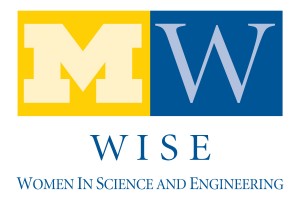2015 High School GIDAS Research Conference
Theme: Genes and Parkinson’s Disease
Do you like science & computers? Are you interested in discovering relationships between genes & diseases? Come to the High School Students’ Research Conference and find out what other students are investigating.
This conference is designed to provide young students to real scientists’ experience in a conference setting so to promote learning and interests in science. Directly interact with a keynote speaker. Hands-on workshops will add fun for the day.
NOTE: This year’s conference proceedings will include a commencement note from Dr. Francis Collins, Director of the National Institute of Health (“the nation’s medical research agency, making important discoveries that improve health and save lives”, and “the largest source of funding for medical research in the world, creating hundreds of thousands of high-quality jobs by funding thousands of scientists in universities and research institutions in every state across America”: extracted from NIH websites). We sincerely appreciate his encouragement to young scientists in the midst of his extremely busy schedule.
Date: June 13, 2015 (Saturday), 12:30 – 5:30 pm
Open to the public, including middle school students.
Registration
If you wish to present, a tentative research title is fine in the registration form.
Tentative Agenda
|
12:01 pm – |
Registration (poster setup)
|
||
|
12:30 pm – |
Greetings from miRcore President
Inhan Lee, Ph.D.
|
||
| 12:35 pm – |
Keynote Address I Daniel Leventhal, M.D., Ph.D.
Assistant Professor of Neurology/Biomedical Engineering, University Of Michigan
Parkinson’s Disease: Bedside to Bench and Back Again Questions and Answers |
||
| 1:05 pm – |
Student Oral Presentation I (5 min each) A1 Sanjana Sathrasala, 10th Grade, Canton High School, Wayne, MI Distinct Role of ABL1 in Apoptosis Under Oxidative Stress in Parkinson’s Disease A2 Shreya Chakravarthy, 10th Grade, Pioneer High School, Washtenaw, MI The Malfunction of the Ubiquitin-Proteasome System and PD A3 Anna Kaehr, 10th Grade, Skyline High School, Washtenaw, MI The Upregulation of PKD1, a Gene Involved in Calcium Regulation & Protein Binding Linked to PD A4 Veena Thamilselvan, 9th Grade, Harrison High School, Oakland, MI Identification of Key Genes Interconnecting Mitochondrial Dysfunction and Insulin Resistance in Parkinson’s Disease A5 Natsume Ono, 11th Grade, Community High, Washtenaw, MI Mutations in PARVB May Play Similar Roles in PD and Coronary Restenosis A6 Ravi Tatineni, 11th Grade, Farmington High School, Oakland, MI Upregulation of Gene Ucp2 through Oxidation Phosphorylation in Sporadic and Familial PD
|
||
| 1:35 pm – | Break (poster setup; snacks availalbe throughout poster session) | ||
| 1:40 pm – |
Student Poster Session (all poster presenters at their posters)
EP300 Correlation to Parkinson’s Disease ǀ Annaliese Bangert The Potential of RELA in Parkinson’s Disease through Apoptosis ǀ Christopher Rittle Neural Cell Death-related Upregulated Genes in Parkinson’s Disease ǀ Hannah Lee The Effect of TCIRG1 on Osteopetrosis and the Relation to Parkinson’s Disease ǀ Isabel Petrescu Downregulation of Apoptosis-managing Endopeptidase ǀ Jong Suk Lee Transcriptional Regulators Are Upregulated in Parkinson Substantia Nigra ǀ Marianne Cowherd MLL Induced Apoptosis with the HOX-gene ǀ Miela Foster ACTN1 Involved with SNCA and JUP in Parkinson’s Disease ǀ Minjun Kim FGR Gene May Lower Cell Death by Interacting with PRKCD Gene ǀ Nandita Gupta LRRK2 in Protein Synthesis ǀ Nicole Belans The Effect of ERGIC3 on Muscle Dystrophy in PD ǀ Ragav Subramanian Upregulation of MAP3K Family in LRRK2 Mutation-related PD ǀ Sanika Kulkarni Analyzing the Relationship between Cell Death Regulation and the FOXO1 Gene in Parkinson’s Disease ǀ Shreya Ohri PPARG and Parkinson’s Disease ǀ TingTing Chang Inhibition of Pre-mRNA Processing in PD ǀ Michael Lee, Sanika Kulkarni, Taeyoon Kim, and Jerry Chen All: discussion and idea sharing |
||
| 2:30 pm – |
Keynote Address II Peter Todd, M.D., Ph.D.
Assistant Professor of Neurology, University Of Michigan
Genetics and Parkinsonism Questions and Answers
|
||
| 3:00 pm – |
Student Oral Presentation II (5 min each group)
B1 Leo Tunkle, 10th Grade, Huron High School, Washtenaw, MI KLF9 is a Potential Blood-based Biomarker in Parkinson’s Disease B2 Caleigh Lin, 10th Grade, Canton High School, Wayne, MI Upregulation of Nuclear Factor of Kappa Light Polypeptide Gene Enhancer in B-Cells in PD B2 Maya Foster, 11th Grade, Huron High School, Washtenaw, MI Investigating the Apoptotic Relationship between PD and the RELA Gene B2 Michael Beckman, 11th Grade, Homeschooled, Livingston, MI The upregulation of NFKB1, throughout the NF-κB Signaling Pathway Potentially Causing Apoptosis in Parkinson’s Disease B3 Pavitra Srinivasan, 10th Grade, Huron High School, Washtenaw, MI The Up-regulation of EP300 Affects Neuron Death in Parkinson’s Disease B3 Emery Pollack, 11th Grade, Brighton High School, Livingston, MI The Correlation between EP300, p53, and Apoptosis to Potentially Cause PD B4 Saveri Nandigama, 10th Grade, Mercy High School, Oakland, MI, PSMA6 and Chaperone Mediated Cell Death B5 Anurima Kumar, 11th Grade, Community High School, Washtenaw, MI Upregulation of JUP in Parkinson’s Disease and Cell Adhesion B6 Elizabeth Woelmer, 11th Grade, Milan High School, Milan, MI WASF2 and Mutant Proteins Interact with Actin Cytoskeleton and Mitochondria in PD
|
||
| 3:30 pm – | Workshops (each runs simultaneously for two 45 min sessions) – middle school students are welcome | ||
|
session I. Computer Research Workshop (at computer lab room 2230)
By Marianne Cowherd and Cassidy Durkee
Designed for people with no or little experience in computational biology. Will learn how to use computational resources to find gene names, structure, and interactions. It’s hands-on.
|
|||
|
session II. Genes Expression Game Workshop (at room 3230) By Jesse Kim, Jungwoo Chang and Julie Lin
You will change gene expressions by various activities (exercise, food, brain usage, rest) and compete with others how fast to make disease expressions to normal ones.
Sorry we have only Starburst as food substitutes. Sudoku is one of the brain activities – learn it in advance.
|
|||
|
session III. Human Processor (Pseudocode) Workshop (at room 2234) By Jungsoo Chang and Jonathan Tao
Pseudocode is a human readable description of a computer program. In this workshop, you will plan pseudocode with a group and as an individual. You will also become a human processor to perform tasks. Individual tasks at the end is a competition.
|
|||
|
5:10 pm – |
2014-15 GIDAS report
Community, Farmington, Huron, Mercy, Milan, Pioneer, Skyline High School GIDAS
|
||
|
5:30 pm |
Closing
GIDAS students will be available to answer how to start one at your school
|
Abstract submission
If you wish to present at the conference podium, please submit an abstract following the format by May 29th, 2015. Selection of oral presentation will be notified by June 2nd, 2015 (note the change of the dates).
Abstracts received by June 4th may be included in the conference proceedings (abstract book publication).
Additional poster presentation may be considered for abstracts received after June 4th if space is available.
Abstract Submission Guidelines
Research Abstract Format
Abstract should be fit in a page (minimum 300 words to maximum 500)
Four required section headings: Introduction, Methods, Results, and Conclusion
Margin: Top 1”, Bottom 1”, Left 1”, Right 1”
Single Line spacing
Title: Arial 14 in bold, center text
Author name(s): Arial 11 bold, center text
Author affiliation(s): Arial 11 italic, center text
Main text: Arial 11 with headings in bold, Align text left
Please refer to last year’s abstracts as examples.
File submission: email attach the abstract both in Word and PDF files to abstract at mircore.org.
Past Year Conferences
Here you can find information about the conferences from past years.
Sponsers:
Some content here depending on data type





